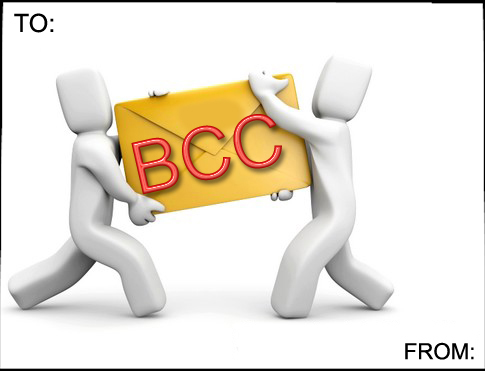High up on the list of causes of avoidable email mistakes relate to use of the “BCC” field in emails, i.e., where the recipient receives a blind copy of the email that is not apparent to those who are receiving it in the “To” or “CC” fields.
The scenario  where this causes problems is where BCC is used to quietly alert someone about a confidential issue. So, for example, Seller Co. is in negotiations with Buyer Co. (I try to be creative with the names) in a consensual M&A transaction between fierce competitors. The existence of the negotiations is a closely guarded secret known only to senior management on both sides and their advisors. In the course of these negotiations, Buyer asks a question about Seller’s business that can only be answered by one of Seller’s lower-level employees. Seller’s CEO sends an email to that employee, asking the question in a manner that does not divulge that it relates to an acquisition and BCCs the Buyer’s CEO as an FYI. The Buyer’s CEO, seemingly harmlessly, replies to the email just saying “Thanks,” but the reply was done as a reply-to-all. As a result, the employee gets a quite unexpected email from his company’s rival’s CEO, thereby blowing the secret of the negotiations.
where this causes problems is where BCC is used to quietly alert someone about a confidential issue. So, for example, Seller Co. is in negotiations with Buyer Co. (I try to be creative with the names) in a consensual M&A transaction between fierce competitors. The existence of the negotiations is a closely guarded secret known only to senior management on both sides and their advisors. In the course of these negotiations, Buyer asks a question about Seller’s business that can only be answered by one of Seller’s lower-level employees. Seller’s CEO sends an email to that employee, asking the question in a manner that does not divulge that it relates to an acquisition and BCCs the Buyer’s CEO as an FYI. The Buyer’s CEO, seemingly harmlessly, replies to the email just saying “Thanks,” but the reply was done as a reply-to-all. As a result, the employee gets a quite unexpected email from his company’s rival’s CEO, thereby blowing the secret of the negotiations.
The easy fix for this problem is for the Seller’s CEO to, instead of BCC’ing the Buyer’s CEO, send the original email only to the employee, and then separately forward that email to the Buyer’s CEO with an “FYI.” In that case a reply from the Buyer’s CEO could only go to the Seller’s CEO.
There is, however, a “good” use for the BCC function. Whenever an email is sent to a large group of recipients that is clearly identifiable (e.g., all members of a company’s board of directors, all members of an LLC), such that there is no need to examine an email distribution list to see whether a particular person received the email, in that case it may be advisable for all the recipients to be BCC’d, and the sender is listed in the “To” field just to have someone as an identified recipient. This is useful to avoid a mass of unnecessary replies-to-all that clog up everyone’s inbox. If the original sender thinks that a particular reply is worthy of being broadcast to the whole group, it can always be forwarded.